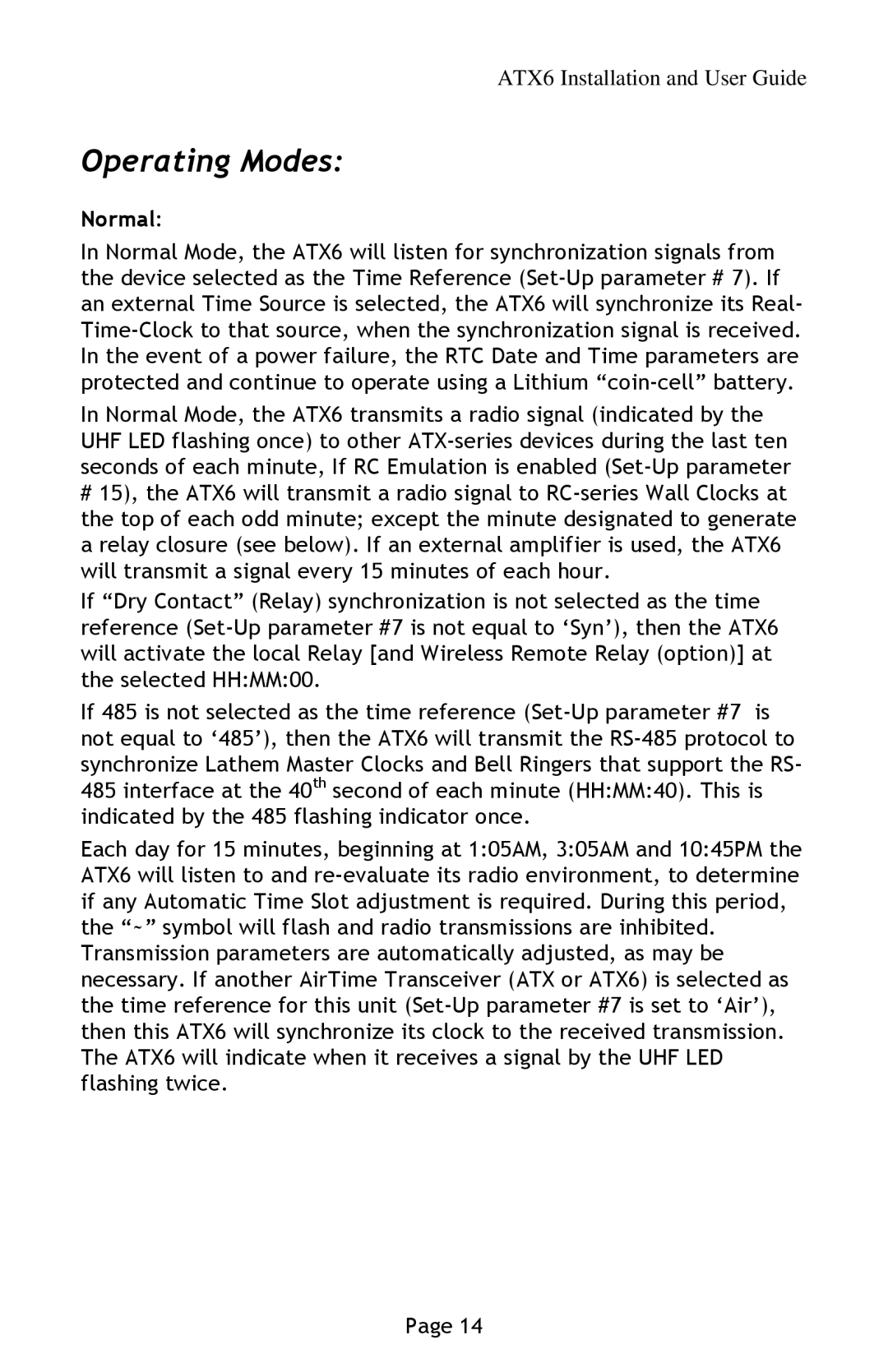ATX6 Installation and User Guide
Operating Modes:
Normal:
In Normal Mode, the ATX6 will listen for synchronization signals from the device selected as the Time Reference (Set-Up parameter # 7). If an external Time Source is selected, the ATX6 will synchronize its Real- Time-Clock to that source, when the synchronization signal is received. In the event of a power failure, the RTC Date and Time parameters are protected and continue to operate using a Lithium “coin-cell” battery.
In Normal Mode, the ATX6 transmits a radio signal (indicated by the UHF LED flashing once) to other ATX-series devices during the last ten seconds of each minute, If RC Emulation is enabled (Set-Up parameter
#15), the ATX6 will transmit a radio signal to RC-series Wall Clocks at the top of each odd minute; except the minute designated to generate a relay closure (see below). If an external amplifier is used, the ATX6 will transmit a signal every 15 minutes of each hour.
If “Dry Contact” (Relay) synchronization is not selected as the time reference (Set-Up parameter #7 is not equal to ‘Syn’), then the ATX6 will activate the local Relay [and Wireless Remote Relay (option)] at the selected HH:MM:00.
If 485 is not selected as the time reference (Set-Up parameter #7 is not equal to ‘485’), then the ATX6 will transmit the RS-485 protocol to synchronize Lathem Master Clocks and Bell Ringers that support the RS- 485 interface at the 40th second of each minute (HH:MM:40). This is indicated by the 485 flashing indicator once.
Each day for 15 minutes, beginning at 1:05AM, 3:05AM and 10:45PM the ATX6 will listen to and re-evaluate its radio environment, to determine if any Automatic Time Slot adjustment is required. During this period, the “~” symbol will flash and radio transmissions are inhibited. Transmission parameters are automatically adjusted, as may be necessary. If another AirTime Transceiver (ATX or ATX6) is selected as the time reference for this unit (Set-Up parameter #7 is set to ‘Air’), then this ATX6 will synchronize its clock to the received transmission. The ATX6 will indicate when it receives a signal by the UHF LED flashing twice.
